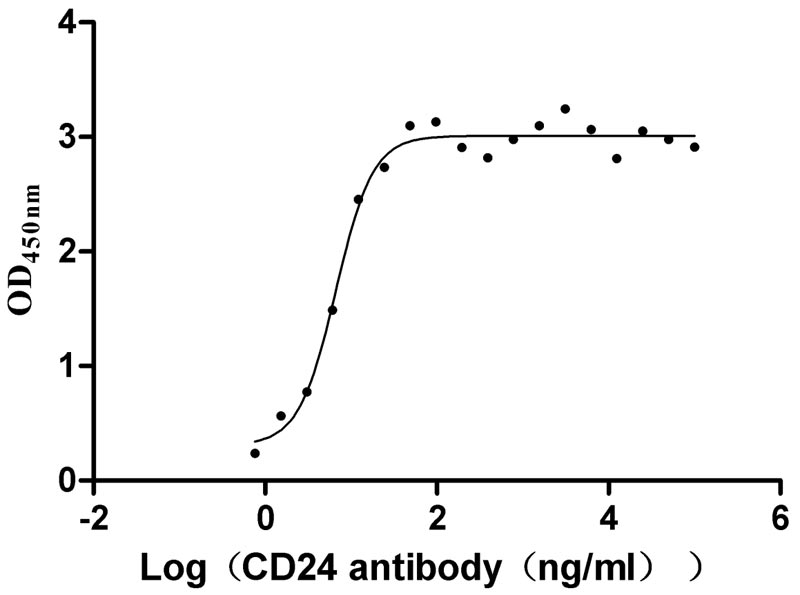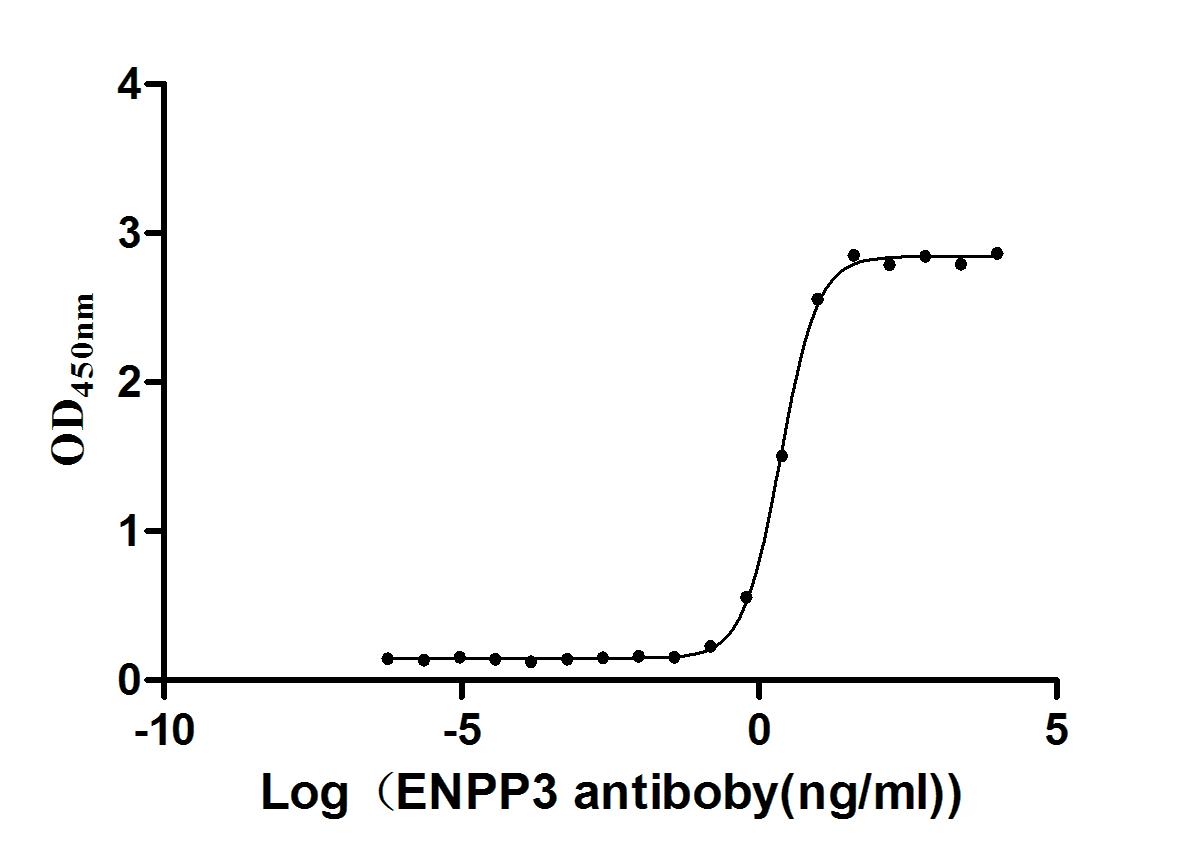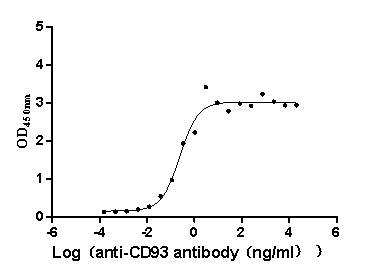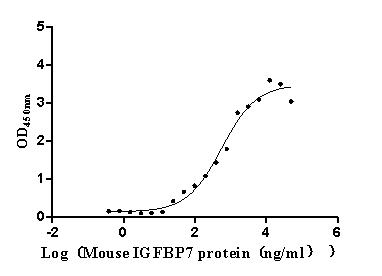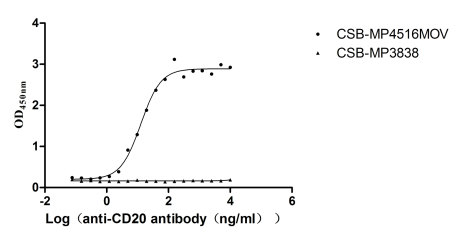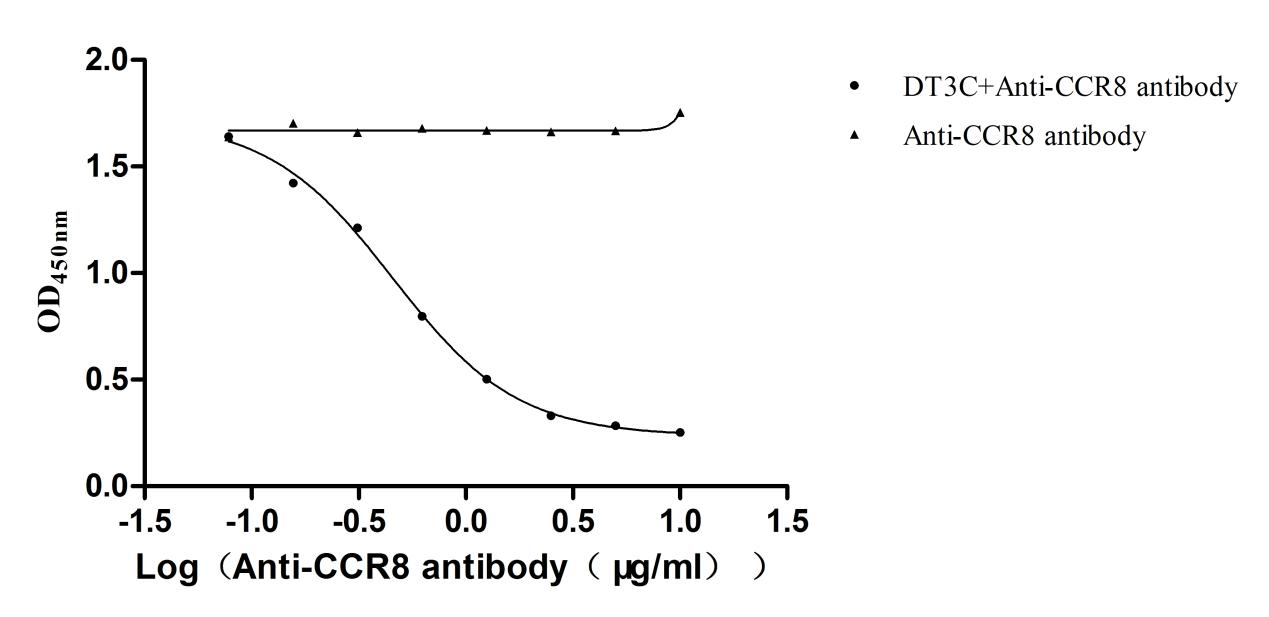Recombinant Mouse 14-3-3 protein epsilon (Ywhae)
-
中文名稱:小鼠Ywhae重組蛋白
-
貨號:CSB-YP026287MO
-
規(guī)格:
-
來源:Yeast
-
其他:
-
中文名稱:小鼠Ywhae重組蛋白
-
貨號:CSB-EP026287MO
-
規(guī)格:
-
來源:E.coli
-
其他:
-
中文名稱:小鼠Ywhae重組蛋白
-
貨號:CSB-EP026287MO-B
-
規(guī)格:
-
來源:E.coli
-
共軛:Avi-tag Biotinylated
E. coli biotin ligase (BirA) is highly specific in covalently attaching biotin to the 15 amino acid AviTag peptide. This recombinant protein was biotinylated in vivo by AviTag-BirA technology, which method is BriA catalyzes amide linkage between the biotin and the specific lysine of the AviTag.
-
其他:
-
中文名稱:小鼠Ywhae重組蛋白
-
貨號:CSB-BP026287MO
-
規(guī)格:
-
來源:Baculovirus
-
其他:
-
中文名稱:小鼠Ywhae重組蛋白
-
貨號:CSB-MP026287MO
-
規(guī)格:
-
來源:Mammalian cell
-
其他:
產(chǎn)品詳情
-
純度:>85% (SDS-PAGE)
-
基因名:
-
Uniprot No.:
-
別名:Ywhae14-3-3 protein epsilon; 14-3-3E
-
種屬:Mus musculus (Mouse)
-
蛋白長度:Full length protein
-
表達區(qū)域:1-255
-
氨基酸序列MDDREDLVYQ AKLAEQAERY DEMVESMKKV AGMDVELTVE ERNLLSVAYK NVIGARRASW RIISSIEQKE ENKGGEDKLK MIREYRQMVE TELKLICCDI LDVLDKHLIP AANTGESKVF YYKMKGDYHR YLAEFATGND RKEAAENSLV AYKAASDIAM TELPPTHPIR LGLALNFSVF YYEILNSPDR ACRLAKAAFD DAIAELDTLS EESYKDSTLI MQLLRDNLTL WTSDMQGDGE EQNKEALQDV EDENQ
-
蛋白標(biāo)簽:Tag?type?will?be?determined?during?the?manufacturing?process.
The tag type will be determined during production process. If you have specified tag type, please tell us and we will develop the specified tag preferentially. -
產(chǎn)品提供形式:Lyophilized powder
Note: We will preferentially ship the format that we have in stock, however, if you have any special requirement for the format, please remark your requirement when placing the order, we will prepare according to your demand. -
復(fù)溶:We recommend that this vial be briefly centrifuged prior to opening to bring the contents to the bottom. Please reconstitute protein in deionized sterile water to a concentration of 0.1-1.0 mg/mL.We recommend to add 5-50% of glycerol (final concentration) and aliquot for long-term storage at -20℃/-80℃. Our default final concentration of glycerol is 50%. Customers could use it as reference.
-
儲存條件:Store at -20°C/-80°C upon receipt, aliquoting is necessary for mutiple use. Avoid repeated freeze-thaw cycles.
-
保質(zhì)期:The shelf life is related to many factors, storage state, buffer ingredients, storage temperature and the stability of the protein itself.
Generally, the shelf life of liquid form is 6 months at -20°C/-80°C. The shelf life of lyophilized form is 12 months at -20°C/-80°C. -
貨期:Delivery time may differ from different purchasing way or location, please kindly consult your local distributors for specific delivery time.Note: All of our proteins are default shipped with normal blue ice packs, if you request to ship with dry ice, please communicate with us in advance and extra fees will be charged.
-
注意事項:Repeated freezing and thawing is not recommended. Store working aliquots at 4°C for up to one week.
-
Datasheet :Please contact us to get it.
靶點詳情
-
功能:Adapter protein implicated in the regulation of a large spectrum of both general and specialized signaling pathways. Binds to a large number of partners, usually by recognition of a phosphoserine or phosphothreonine motif. Binding generally results in the modulation of the activity of the binding partner. Positively regulates phosphorylated protein HSF1 nuclear export to the cytoplasm.
-
基因功能參考文獻:
- Rod photoreceptors are enriched in YWHAE (14-3-3 epsilon). Immunohistochemistry revealed that 14-3-3 epsilon and 14-3-3 zeta exhibit unique distributions in photoreceptors with 14-3-3 epsilon restricted to the inner segment and 14-3-3 zeta localized to the outer segment. PMID: 29486162
- Authors used 14-3-3epsilon (Ywhae) flox mice and found that 14-3-3epsilon deficiency results in an increase in neurite formation. PMID: 28173130
- The complete ablation of the 14-3-3epsilon protein results in multiple defects in neuropsychiatric behaviors in mice. PMID: 27845227
- 14-3-3epsilon might directly bind to CD13, which transmits its signal in chondrocytes to induce a catabolic phenotype similar to that observed in osteoarthritis. PMID: 26208633
- Data indicate that 14-3-3epsilon is required for the mitotic entry in the fertilized mouse eggs and responsible for sequestering the CDC25B in cytoplasm. Its binding to CDC25B-S321 phosphorylated by PKA induces mitotic arrest. PMID: 25059436
- Ser321 of Cdc25B is the specific binding site for 14-3-3epsilon binding. PMID: 23326474
- 14-3-3epsilon deletion did not appear to induce compensation by other 14-3-3 isoforms but led to ventricular noncompaction, resulting from a selective reduction in compact myocardium thickness. PMID: 23071090
- 14-3-3epsilon haploinsufficiency decreased the incorporation of expanded ATXN1 into its large toxic complexes in the cerebellum but not in the brainstem, and the distribution of ATXN1's small and large native complexes differed significantly between two regions PMID: 21245341
- 14-3-3 epsilon belongs to a regulatory protein family involved in important cellular processes, including those leading to neurodegenerative diseases, and thus its increased expression suggests a role of this protein in tuning microglia activation PMID: 22065591
- The finding of this study suggested that dysfunction of the TH neuronal network caused by the deficit of 14-3-3 epsilon may have been involved in the pathophysiology of schizophrenia and correlated with a dysfunction in the DISC1 complex. PMID: 21458426
- 14-3-3epsilon interacts directly with PDX-1 to regulate its cellular distribution in pancreatic beta cells. PMID: 21287435
- overexpression of 14-3-3epsilon led to resistance to both rotenone and 1-methyl-4-phenylpyridinium (MPP(+)), while other isoforms were not protective against both toxins. PMID: 21152247
- The appearance of 14-3-3 proteins in the cerebrospinal fluid is characteristic of some neurodegenerative conditions PMID: 11784696
- 14-3-3epsilon is important for neuronal migration by binding to NUDEL and provide a molecular explanation for the differences in severity of human neuronal migration defects with 17p13.3 deletions PMID: 12796778
- 14-3-3 adapter proteins may have a role in regulating CD81 signaling, possibly dependent on cellular redox PMID: 14966136
- HSF1 associates with ERK1 and 14-3-3epsilon during heat shock to modulate the amplitude of the response and lead to efficient termination of HSP expression on resumption of growth conditions PMID: 15364926
- UBPY is catalytically inhibited in a phosphorylation-dependent manner by 14-3-3s during the interphase, and this regulation is cancelled in the M phase. PMID: 17720156
- aldosterone-induced 14-3-3 isoforms, beta and epsilon, interact with phospho-Nedd4-2 as an obligatory heterodimer, blocking its interaction with ENaC and thereby increasing apical ENaC density and sodium transport. PMID: 18687683
顯示更多
收起更多
-
亞細(xì)胞定位:Nucleus. Cytoplasm. Melanosome.
-
蛋白家族:14-3-3 family
-
數(shù)據(jù)庫鏈接:
Most popular with customers
-
Recombinant Human Signal transducer CD24 (CD24)-Nanoparticle (Active)
Express system: Mammalian cell
Species: Homo sapiens (Human)
-
Express system: Mammalian cell
Species: Homo sapiens (Human)
-
Recombinant Macaca fascicularis CD93 molecule (CD93), partial (Active)
Express system: Mammalian cell
Species: Macaca fascicularis (Crab-eating macaque) (Cynomolgus monkey)
-
Recombinant Mouse Complement component C1q receptor (Cd93), partial (Active)
Express system: Mammalian cell
Species: Mus musculus (Mouse)
-
Recombinant Macaca fascicularis Membrane spanning 4-domains A1 (MS4A1)-VLPs (Active)
Express system: Mammalian cell
Species: Macaca fascicularis (Crab-eating macaque) (Cynomolgus monkey)
-
Recombinant DT3C (Diphtheria toxin & spg 3C domain) for Antibody Internalization Assay (Active)
Express system: E.coli
Species: N/A


